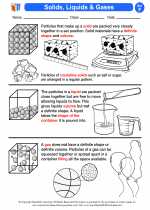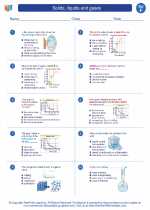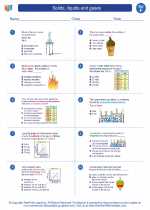Diameter
The diameter of a circle is a straight line that passes through the center of the circle and whose endpoints lie on the circle. It is the longest chord of the circle and is exactly twice the length of the radius.
Formula for Diameter
The formula to calculate the diameter of a circle is:
Diameter (d) = 2 * Radius (r)
Properties of Diameter
Some important properties of the diameter include:
- The diameter is the longest chord of a circle.
- It passes through the center of the circle.
- It divides the circle into two equal halves, known as semicircles.
Study Guide
When studying the concept of diameter, it's important to understand the following key points:
- Definition of Diameter: Understand what the diameter of a circle represents and how it is different from the radius and other parts of the circle.
- Calculation: Learn how to calculate the diameter of a circle using the formula d = 2 * r, where d is the diameter and r is the radius.
- Relation to Circumference: Understand the relationship between the diameter and the circumference of a circle. The circumference of a circle is equal to π * d, where d is the diameter and π (pi) is a constant approximately equal to 3.14.
- Real-life Examples: Explore real-life examples where the concept of diameter is applicable, such as measuring the diameter of a circular object or understanding the role of diameter in various engineering and architectural applications.
By mastering the concept of diameter, you will have a solid foundation for understanding the geometry of circles and their applications in various fields.
.◂Science Worksheets and Study Guides Sixth Grade. Solids, liquids and gases
Study Guide Solids, liquids and gases
Solids, liquids and gases  Activity Lesson
Activity Lesson Solids, Liquids & Gases
Solids, Liquids & Gases  Worksheet/Answer key
Worksheet/Answer key Solids, liquids and gases
Solids, liquids and gases  Worksheet/Answer key
Worksheet/Answer key Solids, liquids and gases
Solids, liquids and gases  Worksheet/Answer key
Worksheet/Answer key Solids, liquids and gases
Solids, liquids and gases  Vocabulary/Answer key
Vocabulary/Answer key Solids, liquids and gases
Solids, liquids and gases  Vocabulary/Answer key
Vocabulary/Answer key Solids, liquids and gases
Solids, liquids and gases 

 Activity Lesson
Activity Lesson
 Worksheet/Answer key
Worksheet/Answer key
 Worksheet/Answer key
Worksheet/Answer key
 Worksheet/Answer key
Worksheet/Answer key
 Vocabulary/Answer key
Vocabulary/Answer key
 Vocabulary/Answer key
Vocabulary/Answer key

The resources above cover the following skills:
PHYSICAL SCIENCE
Energy
Students who demonstrate understanding can:
Plan an investigation to determine the relationships among the energy transferred, the type of matter, the mass, and the change in the average kinetic energy of the particles as measured by the temperature of the sample.